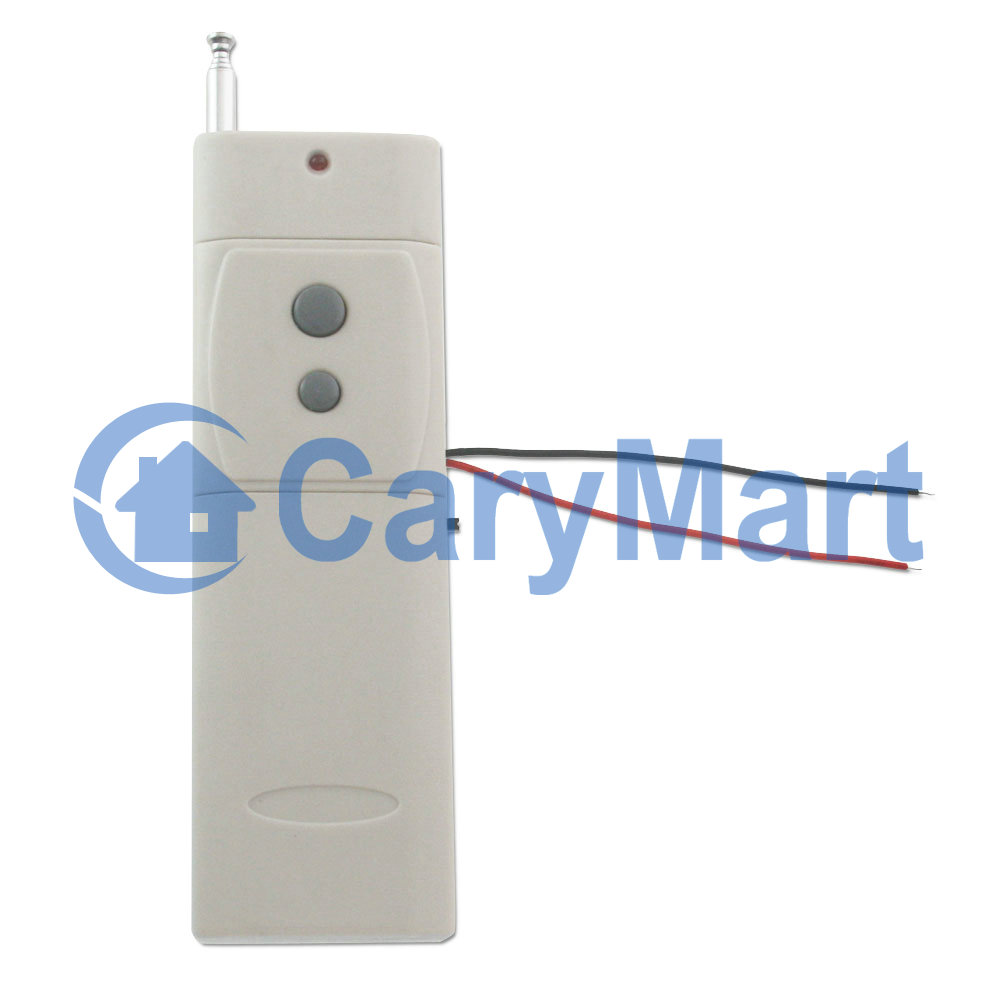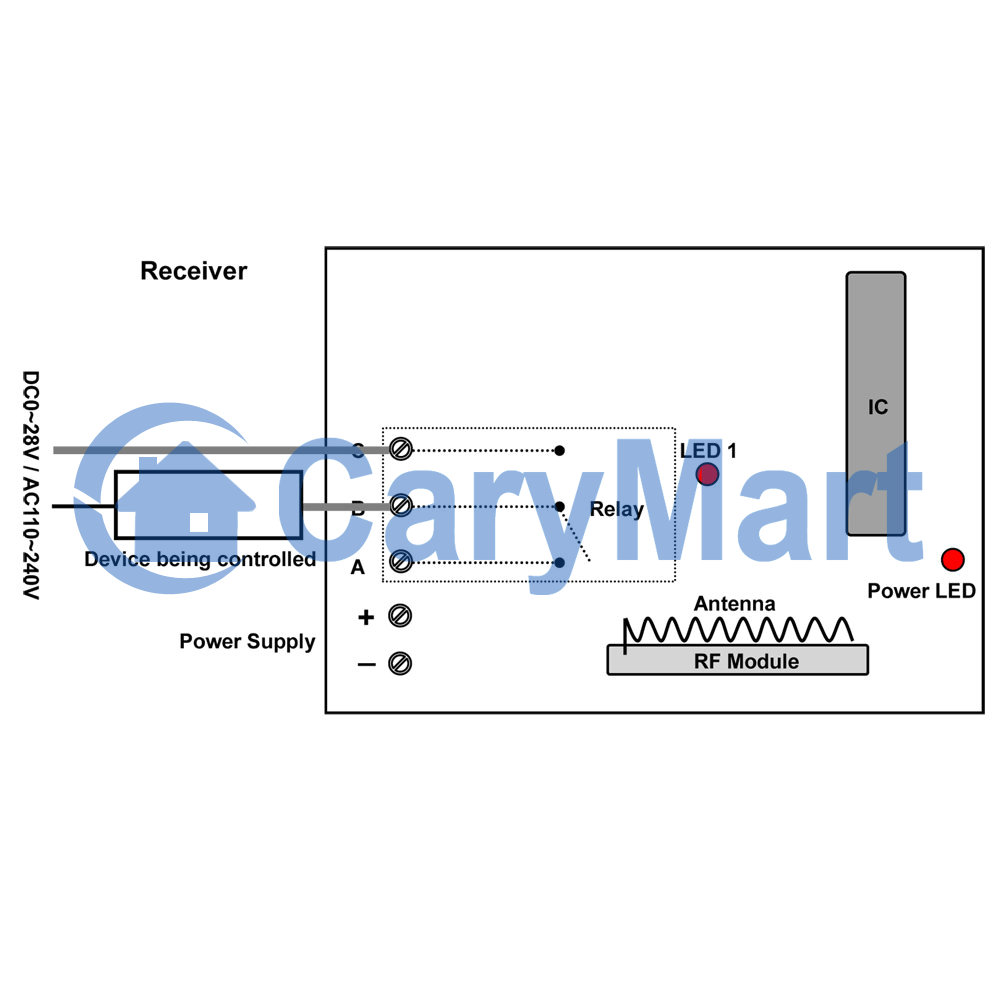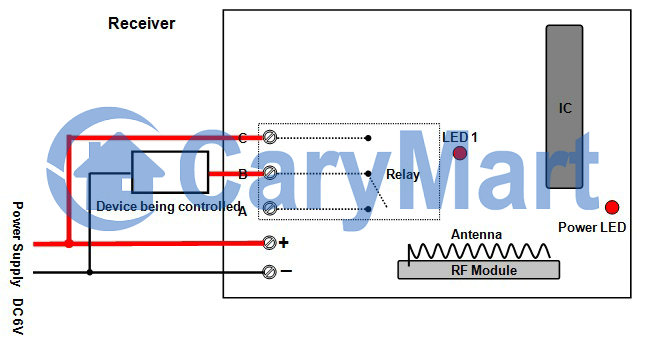Automation or automatic control is the use of various control systems for operating equipment as machinery, uses in factories, home. The biggest benefit of automation is that it saves labor, energy and material to improve quality, accuracy, efficiency and precision. Have you ever thought about home automation?
Someone wants to build home automation. Module 1 will connect to one existing device which make module 1 transmit RF signal to module 2 to indicate either “ON” state or “OFF” state. Module 2 will connect device which is ready to being controlled. When module receives the signal from module 1, it will turn on or off controlled device.
In fact, we have a completely new product 5~28V triggered great range transmitter of CB-2V which is applied for one device controlling another device. This transmitting module will be triggered by DC power 5~28V input. When your existing device is on, the transmitter will get power to send signal to receiver. We really hope this kind of remote can satisfy his needs.
We think our product can meet his need. According to his requirement, that transmitter can work with dc 6V 1 channel latched long range receiver model of (S1L-DC06-ANT2). The receiver needs low voltage and current. Working voltage range of relay can be DC 0~28V. And The existing device will supply low current to activate transmitter. They work together to finish the automation.
Let’s study the wiring diagram. That is fairly simple. Existing device is connected to the positive and negative terminals of the transmitter. The device being controlled is connected to the normally open terminals “B”&”C” of receiver.
Or our receiver is activated by DC6V power. If the device he wants to control is also activated by 6V. We provide another wiring diagram to you.
When the transmitter got a voltage input from the working existing device, the transmitter will be triggered and send an “On” RF signal to the receiver. When the receiver received this signal, it will indicate the device being controlled to “On” state. Likewise, the existing device stops working and transmitter will send an “Off” RF signal to receiver. After receiving the signal, the receiver will indicate the device being controlled to ‘Off” state.





 Follow
Follow